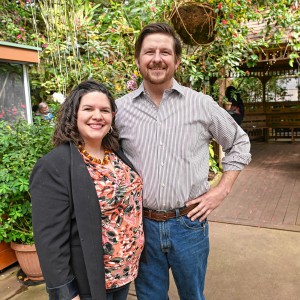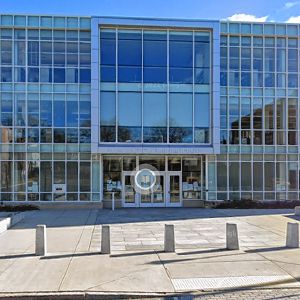State’s new housing law to trigger zoning reset for accessory dwellings

AP FILE PHOTO/ELISE AMENDOLA AP FILE PHOTO/ELISE AMENDOLA
| Published: 08-24-2024 12:24 PM |
AMHERST — In a town like Amherst, where a significant number of rentals are offered for local college students, accessory apartments, featuring a kitchen, bath and sleeping quarters, have long been allowed by a matter of right, so long as one of the two units on a property remains owner occupied.
With the state’s Affordable Homes Act recently signed into law by Gov. Maura Healey, to ramp up housing production across Massachusetts, such accessory apartments are now permitted in all communities across the state, and with language that “no municipality shall unreasonably restrict the creation or rental of an accessory dwelling unit that is not a short-term rental,” appears to put an end to some of the rules, including Amherst’s owner-occupied requirement and other communities that prohibit free-standing, or detached, accessory dwellings.
Cities and towns across the state have 180 days, or until February, bring their zoning bylaws and ordinances into compliance for governing in-law apartments or granny flats.
For Michael Pill, a local attorney. who is advising Amherst town officials, landlords and property managers about this change in the law, there may be discomfort in the new law.
“I believe this will put an end to the long-standing debate in Amherst and other towns about increasing density in single-family residential neighborhoods,” Pill wrote in a memo to officials.
Because each single-family home in a single-family residential zoning district is entitled to an “ADU” by right, many restrictions will go by the wayside.
“I can already hear the howls of protest from Amherst owner-occupants who in the past have blocked discretionary special permits for ADUs,” Pill said. “That era is at an end.”
While accessory dwellings have been of only limited interest in Amherst, Ira Bryck, who has been analyzing the town’s housing situation, recently posted on the Amherst Indy website that the new rules show state officials don’t understand how a college town will be impacted.
Article continues after...
Yesterday's Most Read Articles
 Northampton Housing Authority boss placed on leave
Northampton Housing Authority boss placed on leave
 NCAA Div. 1 Men’s Ice Hockey: UMass stuns Minnesota 5-4 in OT, advances to regional final
NCAA Div. 1 Men’s Ice Hockey: UMass stuns Minnesota 5-4 in OT, advances to regional final
 UMass Men’s Basketball: Three Minutemen enter transfer portal
UMass Men’s Basketball: Three Minutemen enter transfer portal
 Putting themselves on the line: Activists say nonviolent protests focus attention, inspire others, drive change
Putting themselves on the line: Activists say nonviolent protests focus attention, inspire others, drive change
 Ready to roll on roads: Amherst priority list tees up $4.55M to rebuild some of town’s worst stretches
Ready to roll on roads: Amherst priority list tees up $4.55M to rebuild some of town’s worst stretches
 USDA yanks $3.4M in aid to state food banks
USDA yanks $3.4M in aid to state food banks
“If it now becomes popular, now that there’s no owner-occupied requirement, it will obviously just be another way to create overcrowded/overpriced student housing in Amherst’s neighborhoods,” Bryck wrote.
Amherst’s oversight is mostly done through the building commissioner. Senior Planner Nate Malloy said that administrative approval is used unless the accessory dwelling is over 1,000 square feet, in which case a special permit is issued.
Malloy told the Planning Board last week that the town bylaw may need a few changes due to the state legislation. “We require owner occupancy, that's the only thing right now in violation of the proposed changes that take effect in February,” Malloy said.
But the town may add designs and standards, architectural character and other criteria, within reason, Malloy said.
This is essentially how Northampton has handled them since 2021, when the city amended its ordinances to eliminate single family-only zones and no longer used the term accessory dwelling unit.
“We allow two-family (homes) by right in every residential district,” said Carolyn Misch, director of the Office of Planning & Sustainability.
Misch explained that second units of any size are already allowed in Northampton’s residential districts, so long as they meet minimum design criteria, setbacks, open space, heights and other dimensional criteria.
Prior to the change three years ago, though, Northampton had limits on size, up to 900 square feet, and the owner-occupancy requirement. A few accessory apartments were built each year under those rules, Misch said.
It’s unclear what impact the state law will have, Misch said, but if more builders are pursuing such housing options due to the state easing the rules, more homes in the city could have accessory apartments.
“I would imagine that we might have an uptick in small second units just because there are now builders who are focused on marketing these to people, and I would guess that the builder market may pivot more to this niche in order to target communities that never had that allowance,” Misch said. “So the more builders that are offering to do projects like this could create a landscape that is more competitive and therefore may become more financially feasible for the client/ homeowner in Northampton.”
For communities that have adopted accessory dwelling units rules, a rationale has often been to provide an opportunity for people to downsize to stay on the same property, providing an option for aging in place rather than having to move elsewhere.
Like Northampton, many have also tweaked the bylaws and ordinances over the years. Deerfield in 2023, for example, adjusted its bylaw to allow accessory apartments to be inhabited by any tenant, rather than only caregivers or people being supported by the owner of the primary residence, and do away with the special permit requirement from the Zoning Board of Appeals.
Concern about growing density, causing noise and infringing on privacy was voiced by Town Meeting members in South Hadley in 2023, before allowing both attached and detached ADUs was adopted. Those who supported the bylaw sought more affordable and accessible housing options.
Most of these will have to be amended and modified again to spell out that residential districts can accommodate one additional accessory dwelling unit, possibly maintaining the dimensional requirements on size that is appropriate.
Smaller towns without sewer systems, or communities where most homes are not connected to public sewer, likely won’t see much impact, as the state housing law doesn’t change the Title 5 sanitary code, which places limits on how many bedrooms can be in a home based on the size of the septic system.
Pill noted that septic systems must be designed for a specified number of bedrooms, with most of these then built for the actual number of bedrooms in the original house.
“Generally no one wants to pay for an over-designed septic system built to handle extra bedrooms,” Pill said. “So an ADU will require either expanding the existing septic system or installing a new one, if there is room on the lot.”
Like in Amherst, an ongoing concern in Hadley is having existing single-family dwellings being converted for use in the rental market. Whether there will be a surge in this with more accessory dwelling units is uncertain, as many residential parcels are relatively small and Hadley’s zoning rules require that a building lot have 10,000 square feet for each bedroom.
“We don’t have sewer everywhere, and if adding another bedroom, that changes the Title 5 requirements,” said Planning Board Clerk William Dwyer. “That will be tough for a lot of lots in Hadley.”
Dwyer said Hadley has never denied an application for an ADU special permit, and revisions being proposed are in an administrative review process to help the building commissioner out. He anticipates revisions, which have been drafted, will likely set reasonable limits, such as maintaining rear and side setback requirements, the need for the dwelling to be on a foundation and for water and septic or sewer connections to the main home. The prohibition on detached dwellings, only allowing accessory use attached or inside the main structure will no longer be applicable.
“In some ways, I think it’s going to have some impact, but I don’t think overall that we’ll be swamped with detached accessory apartments,” Dwyer said.
There is not likely to be the same concern that came up in 2015, when a Mount Holyoke graduate attempted to change zoning so she could continue to live in her tiny house, with a kitchen, bedroom, bathroom and living room, contained in a 190-square-foot trailer on wheels.
During a discussion at Tuesday’s Planning Board meeting about proposed changes, Planning Board Chairman James Maksimoski said it might be easy to convert a garage to an accessory apartment, but also expensive due to meeting building code, an irony of the demands being placed on cities and towns.
“You’ve got one part of the state that is pushing to make everything affordable and the other part of the state that wants to make all these changes which drives the costs out of sight,” Maksimsoki said. “But we have no control over either, we’ve just got to comply.”
Scott Merzbach can be reached at smerzbach@gazettenet.com.






 Hopeful buyers emerge for Magic Wings butterfly conservatory in South Deerfield
Hopeful buyers emerge for Magic Wings butterfly conservatory in South Deerfield Area briefs: Mount Holyoke’s Trailblazers of Color conference; Holyoke Library to host annual mini golf and games; Westfield State launches paramedic program
Area briefs: Mount Holyoke’s Trailblazers of Color conference; Holyoke Library to host annual mini golf and games; Westfield State launches paramedic program  Legislation inspired by a Leverett family allows school bus monitoring systems
Legislation inspired by a Leverett family allows school bus monitoring systems
